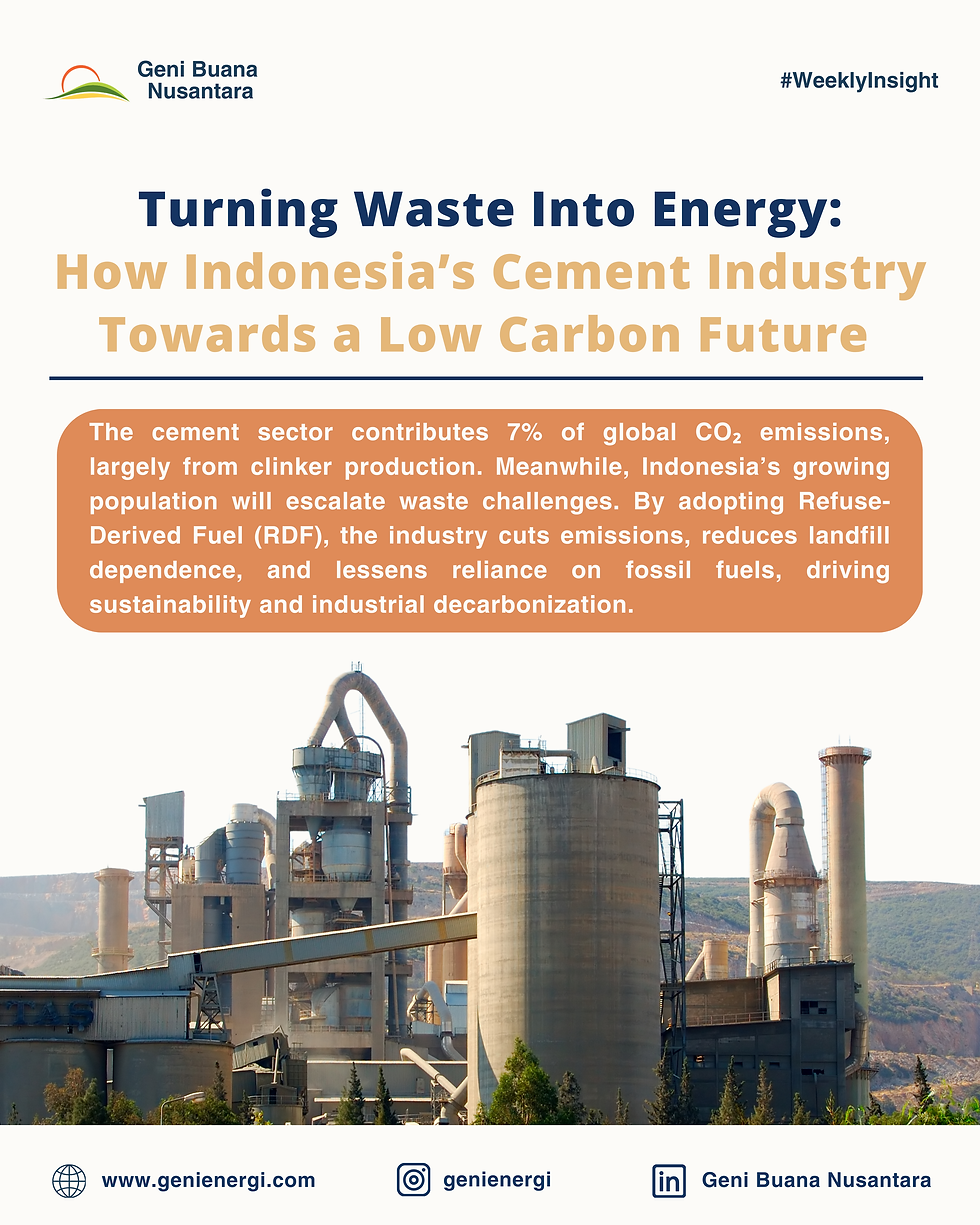Powering a Greener Future: How Rooftop Solar is Transforming Indonesia's Energy Landscape
- Geni Buana Nusantara
- Sep 12, 2024
- 3 min read

Climate change is a global challenge we can no longer ignore. To tackle rising temperatures, the world united through the Paris Agreement with a goal to limit global warming to 1.5-2°C. A significant part of achieving this involves reducing fossil fuel use and transitioning to cleaner, renewable energy sources. According to the International Renewable Energy Agency (IRENA), by 2020, more than 80% of new global power capacity came from renewable sources, primarily solar and wind energy. Among these, rooftop solar photovoltaic (PV) systems are playing a key role in cutting greenhouse gas emissions, particularly from the energy sector.
Rooftop solar PV systems offer several notable benefits. They are space-efficient, requiring only about 12-14 m² per 1 kWp, making them easy to install on homes or commercial buildings. The system, including its mounting, is lightweight at 10-15 kg per m², which places minimal strain on building structures. They are also low-maintenance, needing only periodic cleaning and basic inspections to maintain optimal performance. With a lifespan of over 20 years and a minimal drop in efficiency, they are durable and long-lasting. However, to ensure maximum performance, it's crucial to consider installation factors like solar radiation, the direction and slope of the panels, roof material, and environmental elements such as vegetation and weather. In Indonesia, which gets around 4-5 hours of effective solar radiation per day, these factors are especially important.
In support of rooftop solar adoption, Regulation of the Minister of Energy and Mineral Resources of the Republic of Indonesia No. 2 of 2024 now governs rooftop solar installations connected to the public electricity grid. This regulation replaced the previous Regulation of the Minister of Energy and Mineral Resources of the Republic of Indonesia No. 26 of 2021, introducing significant changes, such as removing capacity limits and simplifying the export-import mechanism of electricity. Users can now send any excess energy they generate back to the PLN grid without limitations, with 100% of exported energy credited for future use. This change unlocks significant growth potential for rooftop solar in both urban and rural areas across Indonesia. For instance, countries like Australia have led the way, with 14.7 GW of rooftop solar capacity already installed. In Indonesia, although installations are still at an early stage, the trend is growing rapidly. Data from PLN shows that from 2018 to 2020, rooftop solar installations jumped by more than 700%.
Several companies in Indonesia have successfully adopted rooftop solar panels to meet their energy needs. One example is Multi Bintang Indonesia, which has installed solar panels at its Sampangagung and Tangerang brewery facilities, supplying 18-20% of their total annual energy usage. As part of The Heineken Company, Multi Bintang Indonesia aims to make a positive environmental and social impact through its "Brew a Better World 2030" initiative.
Now is the perfect time to switch to renewable energy. Rooftop solar PV is an effective solution to reduce emissions and save on energy costs. While solar energy may not be the most efficient or powerful renewable energy sources, transitioning to solar PV is far better than sticking with fossil fuels. It is easy to install, low-maintenance, and built to last. With favorable regulations and a rapidly growing market in Indonesia, both businesses and individuals can contribute to a greener future. Even though there are more advanced renewable energy options, adopting solar PV is still a valuable step forward in the energy transition. Follow the lead of companies like Multi Bintang Indonesia and embrace the power of solar energy to accelerate the shift to clean energy. Together, we can create a more sustainable future!




Comments